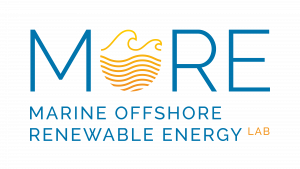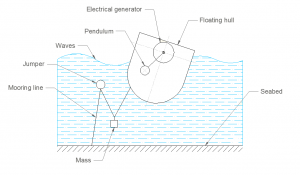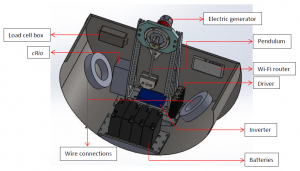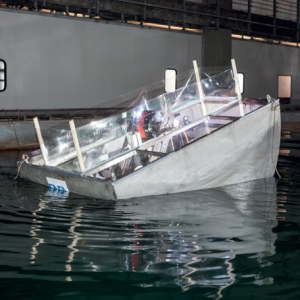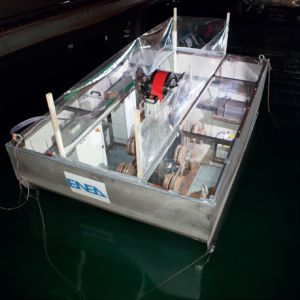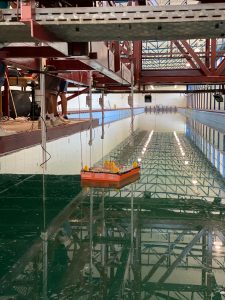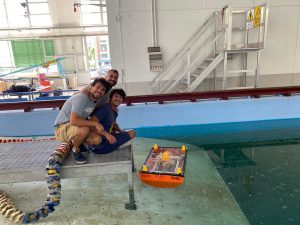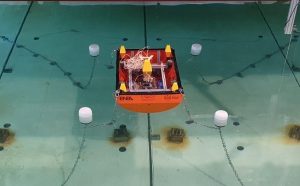Project > PeWEC
PeWEC, acronym of Pendulum Wave Energy Converter, in which the assigned system to the energy generation consists by a group of pendulums that through their oscillating motion, determined by hull’s dynamic, transmit a force to PTO, who generates electric energy.
It is an offshore, floating, pendulum-based Wave Energy Converter developed by Wave for Energy, Polytechnic of Turin and ENEA, with TRL5.
It is mainly composed of a floating hull moored on the seabed and a pendulum connected to the shaft of an electrical generator which is integral with the hull structure. Likely in the case of ISWEC device, pendulum, electrical generator and all other equipment necessary for the device functioning are enclosed in the hull.
Activity in partnership with ENEA within PAR.
PeWEC is initially aiming at lower energetic closed seas with lower-period waves (e.g., the Mediterranean Sea). The device is anchored to the seabed by means of a 3-line-3-segment mooring system, with each line composed of a jumper (riser) and a clump-weight. When the device is moved by the waves, a relative motion between the hull and the internal pendulum is obtained, mostly due to the pitching motion. The kinetic energy related to this movement is converted into electrical energy by the PTO connected to the pendulum’s hinge.
A control law is implemented in the PTO driver to adjust the pendulum dynamics to the instantaneous sea conditions, with the purpose of maximising the output energy.
The hull is a sealed steel structure composed of a curved keel, two side walls and a flat topping; three internal sand ballasts (on the keel, stern and bow) ensure the mass distribution necessary to guarantee the required inertial properties, while a trellis structure is used to support the pendulum and the electronic equipment. The pendulum is composed of a cylindrical steel oscillating mass and a shaft, which is connected to the PTO system through a gearbox that ensures an appropriate coupling between the pendulum oscillation velocity and the PTO nominal speed. In order to extract energy from the pendulum movement, the PTO generates a reaction torque, which is adjusted by the driver’s control system.
The PeWEC has been invented in the Marine Offshore Renewable Energy Lab of Politecnico di Torino, and further developed thanks to a collaboration with ENEA (Italian National Agency for New Technologies, Energy and Sustainable Economic Development), leading to a 1:12 scale testing in Rome in 2016 to validate numerical models in operational conditions, and a 1:25 experimental campaign in Naples in October 2021 to investigate survivability and mooring layout during extreme events.
PeWEC test videos by ENEA

